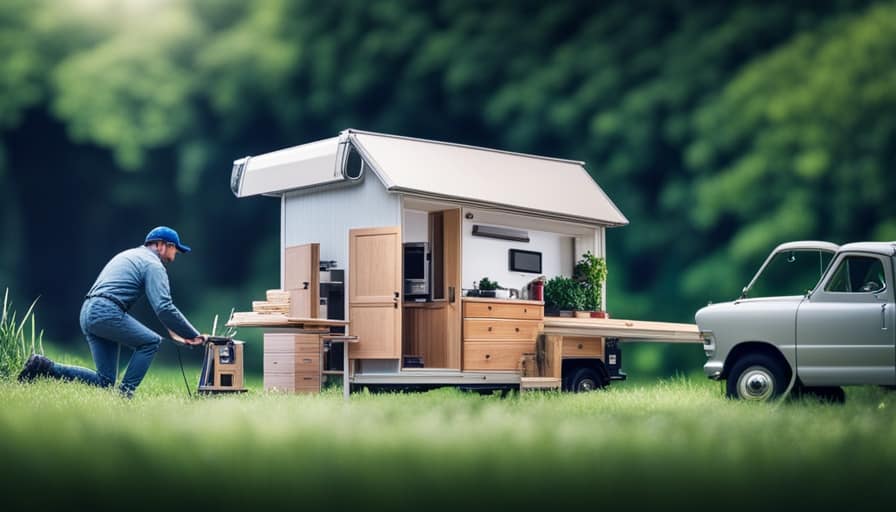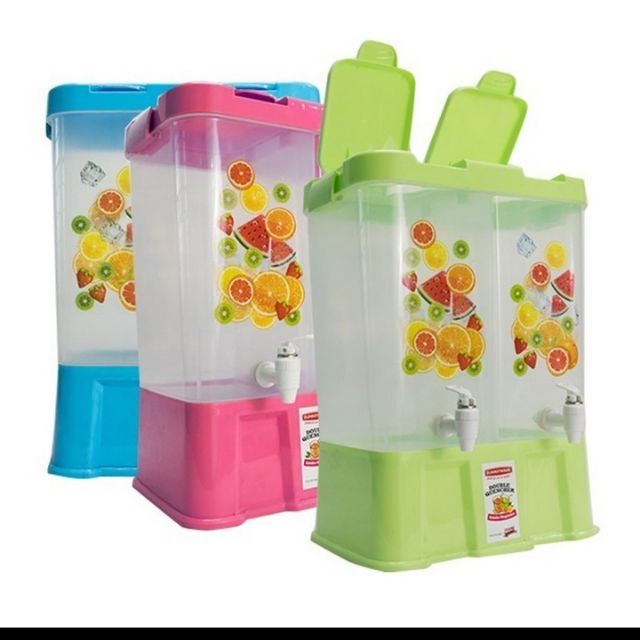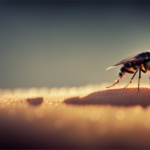Kitchen Equipment
How Do I Get Rid of Tiny Flying Bugs in My House Plants

I’ve got a problem. Tiny flying bugs have invaded my house plants, and they seem to be multiplying by the minute. But fear not, because I’ve done my research and I’ve got the answers you’re looking for.
In this article, I’ll guide you through the identification, causes, and remedies for getting rid of these pesky insects. Whether you prefer natural solutions or chemical treatments, I’ve got you covered.
Say goodbye to those annoying bugs and hello to healthy house plants. Let’s get started!
Key Takeaways
- Fungus gnats and whiteflies are common pests in house plants.
- Homemade vinegar traps, enhancing plant hygiene, attracting beneficial insects, and using natural pest control allies are effective natural remedies.
- Insecticidal soap and neem oil are safe and effective chemical solutions for eliminating the bugs.
- Proper watering practices, providing adequate sunlight, maintaining a clean environment, and regular inspection and care can prevent future infestations.
Identifying the Tiny Flying Bugs in Your House Plants
I’ve noticed some tiny flying bugs in my house plants, and I need to figure out what they are. Identifying these pests is crucial for effective pest control and proper house plant care.

The most common tiny flying bugs found in house plants are fungus gnats and whiteflies. Fungus gnats are small, black flies that thrive in moist soil and feed on decaying organic matter. They can be controlled by allowing the soil to dry out between waterings and applying sticky traps to catch the adult flies.
On the other hand, whiteflies are small, white insects that suck sap from plant leaves, causing them to wilt and turn yellow. They can be treated by using insecticidal soap or neem oil, and by regularly inspecting and cleaning the plant leaves.
Understanding the specific type of tiny flying bugs in your house plants is the first step towards controlling pests and maintaining healthy plants.
Understanding the Causes of Infestation
To understand the causes of infestation, I’ll explore common factors that attract tiny flying bugs to house plants. These pests are often drawn to the warmth and humidity of indoor environments, making house plants an ideal breeding ground for them.

One common sign of infestation in house plants is the presence of small, flying insects around the plant or on its leaves. These bugs are usually attracted to the moisture and nutrients found in the soil, as well as the organic matter present in decaying leaves or dead plant material.
Overwatering and poor drainage can create the ideal conditions for these bugs to thrive. To prevent further infestations, it’s important to address these factors by allowing the soil to dry out between waterings and removing any dead leaves or plant debris regularly.
Additionally, it’s advisable to quarantine new plants before introducing them to your existing collection to prevent the spread of pests.
Natural Remedies for Getting Rid of Tiny Flying Bugs
One effective natural remedy for getting rid of tiny flying bugs in my house plants is using a homemade vinegar trap. To create this trap, simply mix equal parts of apple cider vinegar and water in a small bowl or jar. Then, add a few drops of dish soap to break the surface tension and prevent the bugs from escaping. The scent of the vinegar will attract the bugs, causing them to fly into the trap and drown.

Another natural remedy is to enhance plant hygiene. Regularly inspect your plants for signs of infestation and remove any affected leaves or stems. Additionally, keeping your plants clean and free from dust and debris will help deter pests and attract beneficial insects that prey on the tiny flying bugs.
Chemical Solutions for Eliminating the Pesky Insects
With the bugs persisting despite my efforts, I turned to both insecticidal soap and neem oil to eliminate the pesky insects in my house plants. These pesticide alternatives are effective in controlling and eliminating tiny flying bugs while being safe for both the plants and the environment.
Insecticidal soap, made from a combination of fatty acids and potassium salts, works by suffocating the insects and disrupting their cell membranes. It is a contact pesticide that needs to be sprayed directly on the bugs to be effective. Neem oil, derived from the neem tree, contains compounds that act as insect growth regulators, disrupting the life cycle of the bugs and preventing them from reaching maturity. It can be applied as a spray or drench to the plants.
| Chemical Solution | Description | Method of Application |
|---|---|---|
| Insecticidal Soap | Made from fatty acids and potassium salts, suffocates insects and disrupts cell membranes. | Spray directly on bugs. |
| Neem Oil | Derived from neem tree, acts as insect growth regulator, disrupting bug life cycle. | Apply as spray or drench. |
Using these organic insecticides not only helps eliminate the pests but also ensures that our plants remain healthy and free from harmful chemicals.

Preventing Future Infestations in Your House Plants
As a plant enthusiast, I’ve found that by regularly inspecting my house plants and implementing proper care practices, I can effectively prevent future infestations of tiny flying bugs. Here are some house plant care tips to keep your plants bug-free:
-
Maintain proper watering: Overwatering can create a moist environment that attracts bugs, so make sure to water your plants only when the top inch of soil is dry.
-
Provide adequate sunlight: Different plants have different light requirements, so choose the best indoor plants for beginners that can thrive in the available light conditions in your home.
-
Keep a clean environment: Remove any fallen leaves or debris from the soil surface, as they can provide a breeding ground for insects.

-
Use organic pest control methods: Consider using natural remedies like neem oil or insecticidal soap to treat any bug infestations that may occur.
Frequently Asked Questions
How Often Should I Water My House Plants to Prevent Infestations of Tiny Flying Bugs?
To prevent infestations of tiny flying bugs in my house plants, I should water them regularly but not excessively. Overwatering can create a damp environment that attracts bugs. Keeping the soil slightly dry between waterings can help deter them.
Can These Tiny Flying Bugs Harm My Other Household Plants or Crops?
These tiny flying bugs can wreak havoc on our beloved plants and crops. It’s essential to understand the potential harm they can cause and how long natural remedies usually take to eliminate them effectively.
Are These Tiny Flying Bugs Attracted to Specific Types of House Plants?
Different types of house plants can vary in their attractiveness to tiny flying bugs. To prevent infestations, it’s important to regularly inspect and clean your plants, use sticky traps, and consider natural insecticides.

How Long Does It Usually Take for Natural Remedies to Effectively Eliminate the Tiny Flying Bugs?
In my experience, it usually takes about 1-2 weeks for natural remedies to effectively eliminate those tiny flying bugs. To prevent future infestations, regularly inspect your house plants and maintain proper hygiene.
Is It Necessary to Remove All Affected Leaves or Plants From My House to Get Rid of the Tiny Flying Bugs?
Removing affected leaves or plants may be necessary to effectively get rid of tiny flying bugs. However, there are preventive measures to avoid infestations without removing plants, such as proper watering and ventilation.
Conclusion
In the intricate ecosystem of our homes, tiny flying bugs can disrupt the harmony of our beloved house plants.
However, fear not, for there are natural remedies and chemical solutions available to eliminate these pesky insects.

By identifying the causes of infestation and taking preventive measures, we can ensure a bug-free environment for our cherished green companions.
May your plants thrive once more, untouched by the buzzing nuisances that once plagued them.
I’m Theodore, and I love tiny houses. In fact, I’m the author of Tiny House 43, a book about tiny houses that are also tree houses. I think they’re magical places where imaginations can run wild and adventures are just waiting to happen.
While tree houses are often associated with childhood, they can be the perfect adult retreat. They offer a cozy space to relax and unwind, surrounded by nature. And since they’re typically built on stilts or raised platforms, they offer stunning views that traditional homes simply can’t match.
If you’re looking for a unique and romantic getaway, a tree house tiny house might just be the perfect option.

Kitchen Equipment
Choosing a Juice Dispenser

Choosing a Juice Dispenser

A juice dispenser is equipped with numerous functions that simplify the making of various beverages. Connecting it to a water line is straightforward, and its design is user-friendly, allowing for adjustments in Brix levels. Additionally, it boasts LED lighting for its graphics and a proprietary blending mechanism to ensure uniform outcomes. These characteristics ensure the delivery of premium drinks without any layering or inconsistency.
Restaurantware
Restaurantware juice dispensers are a great way to serve cold juice or other beverages to guests. The stainless steel construction gives it a sleek appearance. It also has a removable core that keeps beverages chilled. In addition to providing a stylish look, Restaurantware juice dispensers are also eco-friendly. They are small enough to fit in most buffets but can still provide significant amounts of juice or other beverages.
You might consider different types depending on the type of drink you are serving. Some are designed for display and others for the kitchen. A back-of house model will generally produce more drinks than a first-of-house one. You may also want to consider whether your drinks are going to be very colorful. You’ll want to consider whether bright colors will clash with the rest of your decor or work with it.
Cofrimell
The Cofrimell CD2J juicer is a high-end juicer that has a large juice capacity and beautiful display. It features four separate compartments that can hold a variety of beverages. To make cleaning easier, the polycarbonate bowls can be removed. The stainless steel evaporator and base are both rust and corrosion-resistant. This juicer is not recommended for milk products or juices with excessive pulp.
Cofrimell has been on the international market for over thirty years and has grown steadily to become a major player in its field. Their extensive product range is constantly being expanded. This has made them synonymous with quality and reliability. The company manufactures drink dispensers as well as slush machines. It is headquartered in Pomezia Italy.
Choice
When a company or organization needs to serve juice or other beverages, they can opt for a Choice juice dispenser. These machines are made from stainless steel with a clear bowl of polycarbonate, making them durable and attractive. They are also very easy to use and cost-efficient. In addition, these machines are great for high-volume service and retail use.
The Choice juice dispenser comes with a 2.1 or 4.2-gallon capacity. Its design is perfect for beverage counters, breakfast buffets, coffee shops, and health clubs. The dispenser has a built-in ice core and a tap for pouring out drinks. It also has a locking lid.
It is made from stainless steel and comes with an ice chamber and drip tray. It also includes a mounting tape and a locking key. It dispenses 100% juice concentrates and blends, and pairs well with healthy menus. The juice dispensers are a great way to offer a variety of juices, smoothies, and other beverages to your customers.
This juice dispenser is suitable for parties, catering, and other events. It has a capacity of 2.1 gallons and an ice chamber. The dispenser’s removable base makes cleaning easy, while the drip tray and spigot make cleanup easy. It measures 11-3/4W, 11D, and 28-3/4H.
Vollrath
Designed to make serving refreshing beverages easy, Vollrath juice dispensers come with multiple features that make cleaning easy and convenient. The stainless steel base and food-grade polycarbonate bowls keep drinks cool and refreshing. The dispensers come with stirring paddles for added convenience. This unit is a great choice for those who enjoy making a variety of beverages.
The beverage dispenser includes a hinged cover and a removable faucet for easy cleaning. It is made of strong legs and rust-resistant 18/8 Stainless Steel. It is designed to be both functional and durable, with a beautiful mirror finish and clear-coated brass accents. Its sleek appearance makes it a great choice for your home and will add elegance to any countertop.
Cofrimell(r)
Cofrimell(r), a juice dispenser, has many advantages. It is made of stainless steel and cools faster than traditional dispensers. In addition, it features a drain and leg kit for easy cleaning and compliance with safety regulations. It can be connected to a 120V electric supply.
A Cofrimell juicer can be used for chilling and storing a variety drinks, including fruit juices or slushies. The dispenser’s unique design and a paddle stirring system allow it to accommodate a wide variety of beverage types. It has a unbreakable polycarbonate bowl, litre markings, stainless steel tap and delrin paddles.
Vollrath(r)
The Vollrath(r) Refrigerated Beverage Dispenser line features a wide selection of configurations that meet the needs of a variety of food service applications. Available in one, two, three, or four bowl configurations, the systems are dependable and scalable for all sizes of operations. Each unit features individual thermostats to maintain consistent temperatures. These systems are especially ideal for serving chilled non-carbonated beverages.
In addition to keeping beverages cold, these beverage dispensers are aesthetically pleasing to the eye. The clear bowl is made of polycarbonate and allows the customer to see the product clearly. They have a thermostat that maintains the pre-mixed drink at a suitable temperature for serving. Additionally, the fountain spray circulator ensures consistent quality. Its drip-free stainless steel spigot helps keep counters clean. The food-grade polycarbonate bowl will provide years of reliable service. It is easy to clean with its removable bowl.
Hi, I’m Emma. I’m the Editor in Chief of Tiny House 43, a blog all about tiny houses. While tree houses are often associated with childhood, they can be the perfect adult retreat. They offer a cozy space to relax and unwind, surrounded by nature. And since they’re typically built on stilts or raised platforms, they offer stunning views that traditional homes simply can’t match. If you’re looking for a unique and romantic getaway, a tree house tiny house might just be the perfect option.
-

 Beginners Guides1 week ago
Beginners Guides1 week agoHow To Buy A Tesla Tiny House
-

 Energy Efficiency1 month ago
Energy Efficiency1 month agoBest Tiny Homes For Cold Climates
-

 Beginners Guides5 days ago
Beginners Guides5 days agoTiny House Nation Where Are They Now Stephanie
-

 Tiny House Resources (e.g., legalities, cost, insurance, FAQs)2 months ago
Tiny House Resources (e.g., legalities, cost, insurance, FAQs)2 months agoDo Tiny Homes Need Planning Permission?
-

 Beginners Guides2 weeks ago
Beginners Guides2 weeks agoFrom The Show Tiny House Nation How Many Keep Their Tiny House?
-

 Beginners Guides2 months ago
Beginners Guides2 months agoUsing a Climbing Net For Treehouse Construction
-

 Beginners Guides2 months ago
Beginners Guides2 months agoHow to Build a Treehouse Without Drilling Into the Tree
-

 Beginners Guides2 weeks ago
Beginners Guides2 weeks agoTiny House Nation Who Pays For The Houses












